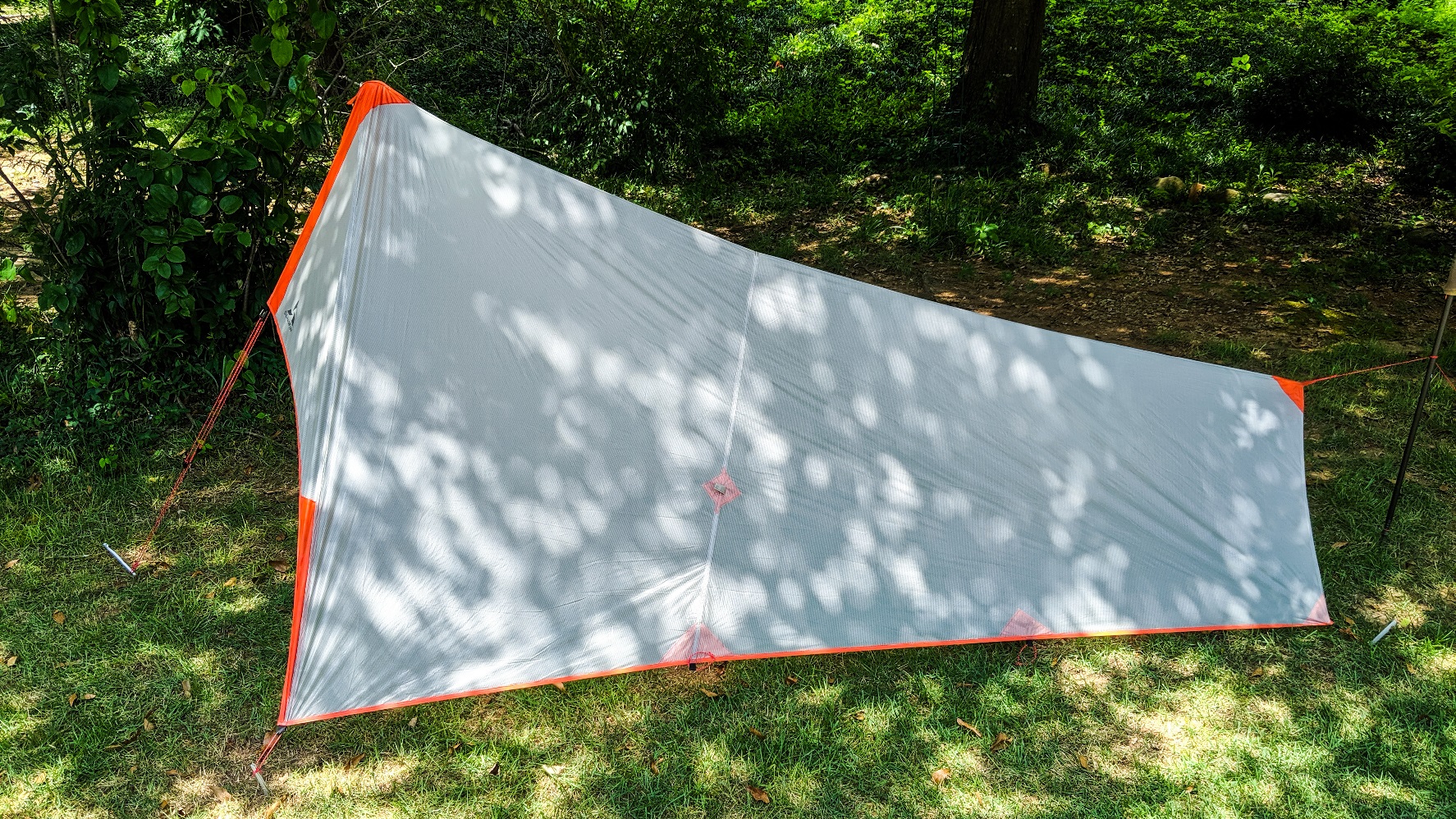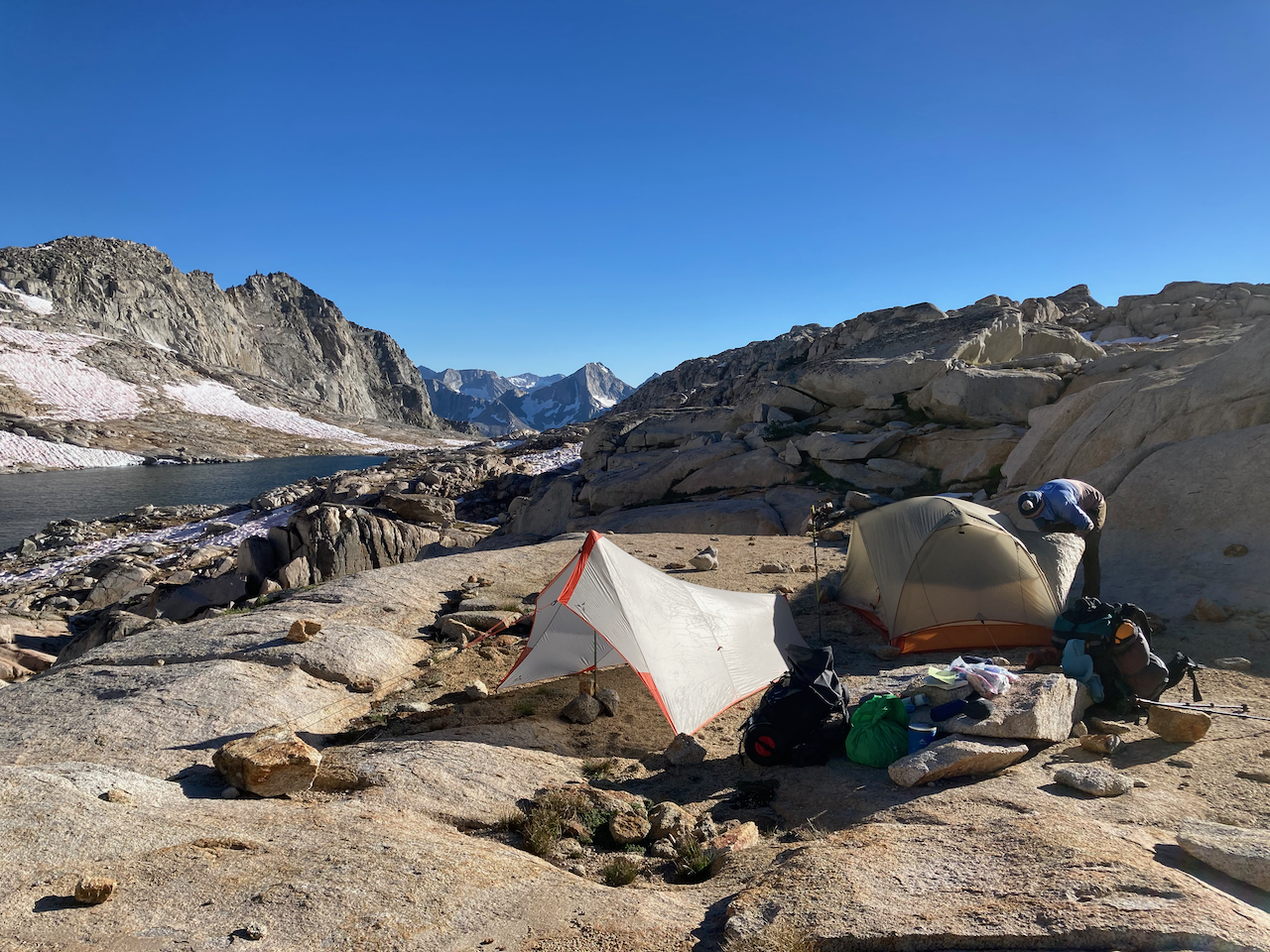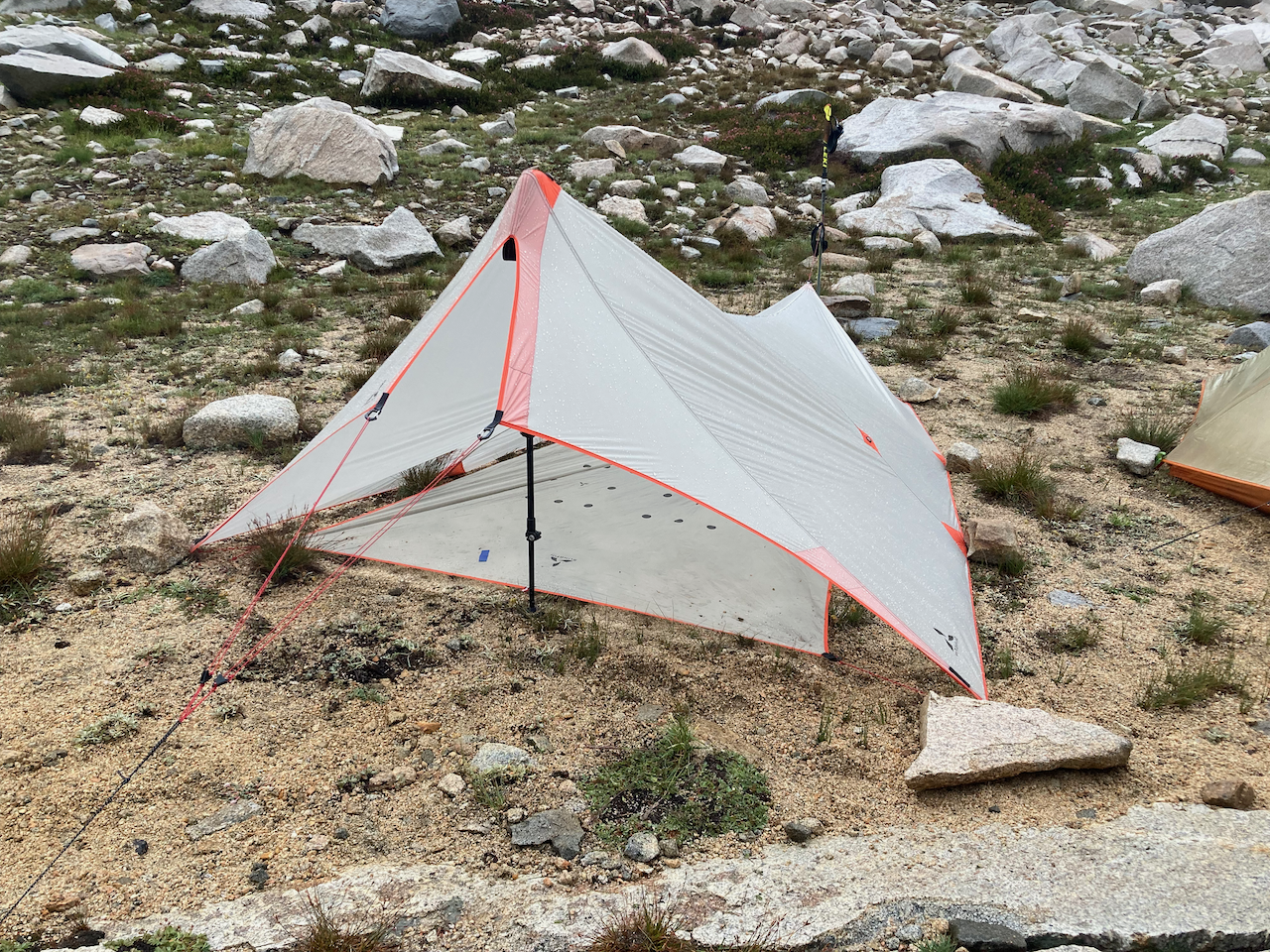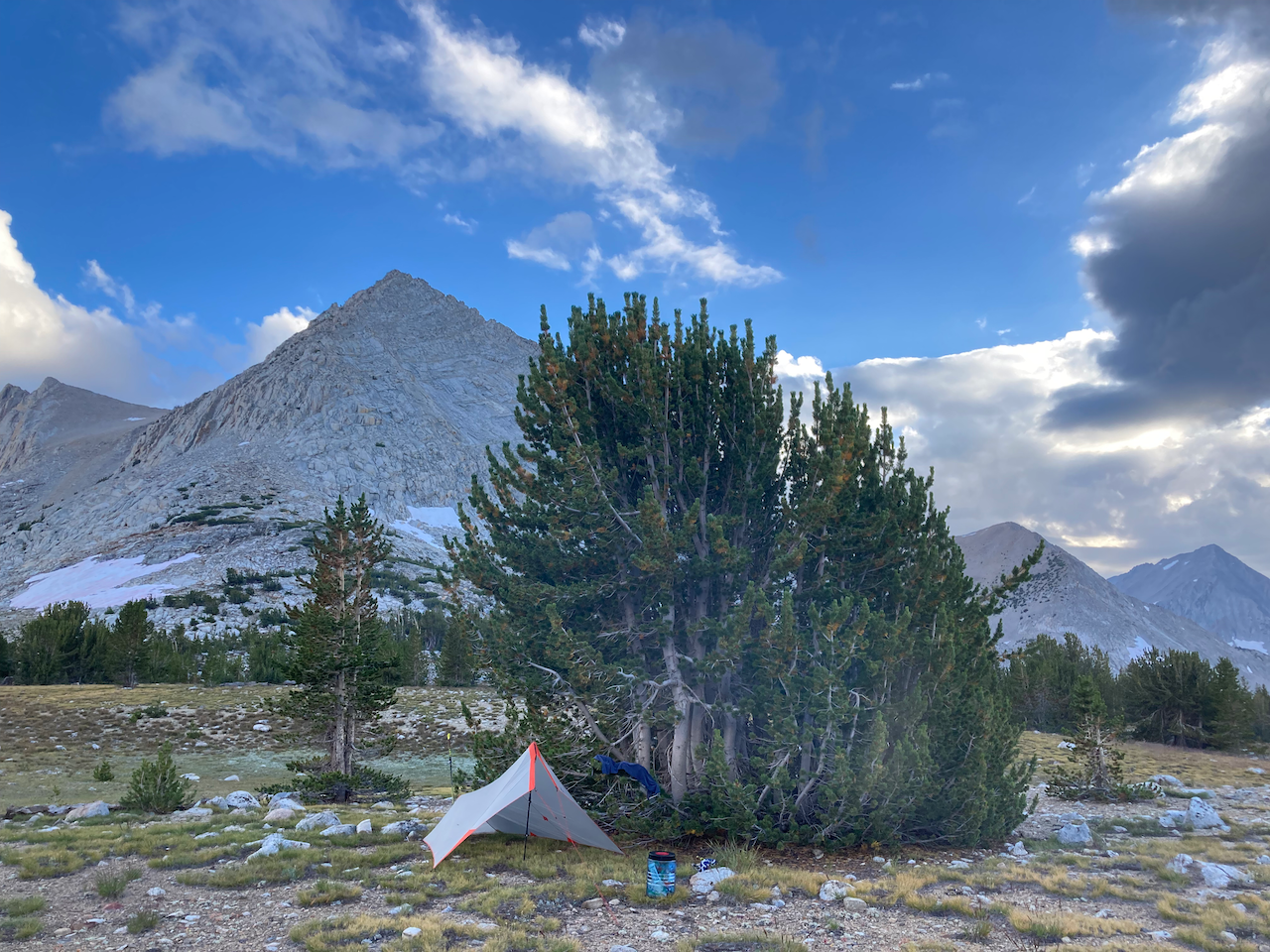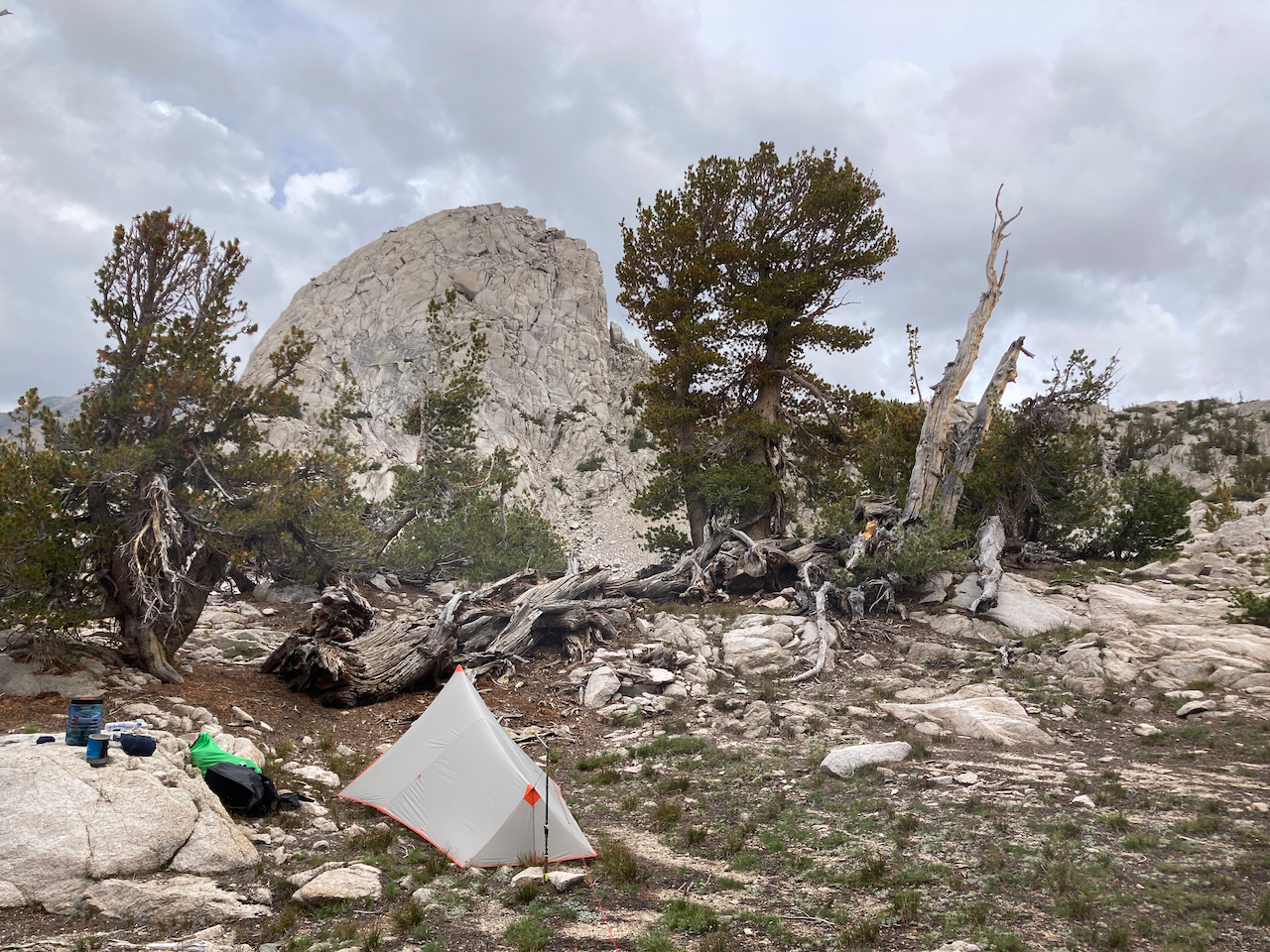Topic
Slingfin Splitwing UL Tarp Review
Forum Posting
A Membership is required to post in the forums. Login or become a member to post in the member forums!
Home › Forums › Campfire › Editor’s Roundtable › Slingfin Splitwing UL Tarp Review
- This topic has 18 replies, 7 voices, and was last updated 1 year, 5 months ago by
 Bruce Tolley.
Bruce Tolley.
-
AuthorPosts
-
Sep 19, 2019 at 2:14 pm #3610887
Companion forum thread to: Slingfin Splitwing UL Tarp Review
The SlingFin SplitWing UL Tarp is a modular 24 oz, 1-2 person shelter that bridges the gap between minimalist tarps and fully enclosed tents.
Sep 19, 2019 at 9:24 pm #3610929I purchased this tarp along with the vestibule and groundsheet a few weeks ago, and I’m taking it to Zion in 10 days. To this point I’ve only played around with it in the yard, but so far I’m in love. It takes up very little pack space, and the combination of those 3 components is slightly lighter than my Echo II tarp with groundsheet. In other words, for slightly less weight I get a vestibule for better weather protection when needed. My only minor quibble is that the front and rear guylines need to be a little bit longer (the guys at SplitWing told me that they were going to address this, and it may already be fixed).
I predict that this is going to be a popular shelter for UL backpackers. It is going to be ideal for folks who A) hike the AT and plan to use the shelters most of the time, but want a lightweight backup with real function in their pack, and B) western thru-hikers who usually get to cowboy camp, but who likewise need a real shelter for just in case.
Sep 19, 2019 at 9:28 pm #3610930Not trying to spam here, but for those who might be interested in some additional details, I did a “first impressions” review at http://fivestarhikes.com/index.php/2019/07/04/slingfin-splitwing-ul-tarp/
Sep 19, 2019 at 9:43 pm #3610931Some interesting ideas, but I have reservations.
First, they’ve used a 10d fabric for the fly. That’s pretty marginal for exposed camping, especially if there’s a risk of wet snow. Though in mitigation they’ve used a high quality 6.6 nylon. I contacted a few makers about this recently and they were recommending that anything under 30d should only be used in sheltered conditions. All their marketing shows below-the-treeline pitches, and I’m thinking that this is where this shelter belongs. Not an issue if that’s where you camp, but it does limit the flexibility. Of course the payoff is the low weight, which is pretty nice.
Second, they have placed the side guy attachment quite high, and I’m not convinced this will provide the optimal angles and stretch when guyed to the ground. For some reason on their product page the illustrate it being mysteriously suspended from above which adds to my suspicions. And there’s only 1 guy per side. The big side panels are the weak point of any A frame and the guying is important – I think that this design might be flappy in the wind. The best design I’ve seen is the Paratarp with 3 side attachments placed low, which looks bomber as well as being more flexible.
Third, they opted for a fixed triangle to close the foot end. I like the Paratarp idea better – you can choose between an open pitch in good weather for views and venting, and a very stormproof closed pitch. In storm pitch the rear pole is inside the Paratarp, so you can reach it to increase the stretch on a sagging fly without leaving the shelter. Not an option with the Splitwing.
Fourth, I’m struggling to get my head around the signature split beak at the front. I can see that it offers a choice of pitching heights, but because it’s split almost up to the pole it doesn’t improve the drip line much. So I’m guessing that the main aim is to protect the edges of the beak? I like the zipless beak design and the way it doesn’t need any extra pegs, but I do worry with beaks that they might flap in storms compared to a sewn-in vestibule. Do you have any experience with this? Plus, according to the pitching video you are stuck with a fairly low 110 cm height when using the beak.
They don’t give any dimensions that I can see, but the foot end seems perilously low. Is there enough space there for a thick pad and lofty bag?
Finally, the bug net seems optimised for fair weather only. There’s no draught protection, and not even a bathtub, so not ideal for freezing winds or Scottish bogs.
Having said all that, for sheltered camping on forest duff this does look a nice shelter – I’m coming at it from the perspective of someone who camps on the windy heights of northern Europe.
Sep 19, 2019 at 9:51 pm #3610935“I like the zipless beak design and the way it doesn’t need any extra pegs, but I do worry with beaks that they might flap in storms compared to a sewn-in vestibule. Do you have any experience with this? Plus, according to the pitching video you are stuck with a fairly low 110 cm height when using the beak.
They don’t give any dimensions that I can see, but the foot end seems perilously low. Is there enough space there for a thick pad and lofty bag?”
I’m hoping to get answers to all of those questions in Zion soon; there’s a good chance of some windy conditions on at least one night. In my yard, I had plenty of room at the foot end (tarp only) with a S2S pad and a Nunatak Arc 30. I’m 6’2″. Can’t speak to the room when using the inner tent….I’m going to stick to my Aeon in buggy conditions.
I HOPE the SplitWing turns out to be wind worthy. If it is, I’ll be taking it on a CDT section hike in Colorado next summer.
Sep 19, 2019 at 10:04 pm #3610939Hi Five Star
Just read your review. Sounds like an “interesting” afternoon – you’re a man that suffers for your art!
Another thing that struck me from your pics is that getting in and out might be a bit of a faff with the beak deployed, as you’d have to unclip the corner of the beak, undo the velcro, and also undo the guy to the wing as well, unless you are OK with crawling really low. Then reverse once inside.
Or is it less hassle than it looks?
Sep 19, 2019 at 10:51 pm #3610943Sep 19, 2019 at 11:59 pm #3610955@Geoff-
LOL yeah, I picked a miserable day for my first set-up in the yard. 90+, humid, fire ants….
Unclipping a wing isn’t a big deal at all for entry. If you set it up using the highest pole length (130cm) I don’t even feel the need. Entry when using the vestibule is a little more “pfaffish” in that the vestibule doesn’t have a center zip- you unclip the vestibule on one side and roll it across. OTOH, the set up of the vestibule is a snap. Super well-designed.
Sep 20, 2019 at 1:09 am #3610960So the fly. mesh inner and vestibule are $340? You could get a very similar Trekkertent Stealth 1.5 for 220 pounds ($275). And the 20g silpoly Stealth fly would be stronger in big weather too. The Trekkertent weighs 24 oz. It also looks a lot easier to enter and exit than the Splitwing. The Splitwing appears a bit busy, expensive and rayway like for me..
http://www.trekkertent.com/home/home/17-stealth-tent-15.html
 Nov 6, 2019 at 12:04 am #3617411
Nov 6, 2019 at 12:04 am #3617411FWIW, I’ve been using this tarp shelter (tarp, vestibule, and groundsheet – no bug tent, yet anyway) for the past couple months backcountry hunting and hiking in the Cascades. Overall, I love it. I especially love how easy it is to carry, and I’ve been through a few showers (and a little snow) under it; I definitely have a lot of confidence in the shelter it provides.
Personally, I’d have no hesitation pitching it above the treeline if I could properly position and tension it.
The only minor gripe I have is that it’s a bit awkward to enter under the “wings.” Not a problem, really, just a little annoyance.
Jun 6, 2020 at 5:47 pm #3651393When considering the SplitWing above the tree line (or out in the desert, or a canyon, or anyplace exposed to the winds and gusts) you have to look at how you’re playing the tent. The first time or two that I pitched in a wind storm I foolishly pitched crossways to the wind and it got LOUD! When I started putting more thought into placement and stuck the foot end into the wind (like Slingfin suggests) I never had problems.
More often than not, I guyed out the sides to rocks or trees and almost never stake them down. I’m not sure if the more horizontal angle helps or hurts flapping but it works for me.
I’ve had this shelter in rain and admittedly dry snow and everything rolls right off.
Getting in and out with the vestibule is one of those things that seems like it will be weird and uncomfortable but is pretty pleasant once you get in there and do it.
I usually sleep with a 2 in (5.08 cm) pad and a sleep with different bags that range from paper thin to 2-3 inches of loft. I have size 12 feet (I don’t know the Metric equivalent) and have never had problems with not having enough foot room in this shelter.
There may be less expensive options but I worry about how often they’ll need to be replaced.
Jun 22, 2021 at 8:07 am #3719548since your review what your long term impressions?
Oct 3, 2022 at 8:17 am #3761214Guying out the pull-outs of the main panels horizontally works for you and that is great. Your horizontal guying to rocks or trees seems best for windy conditions.
A more upward angle can be safely achieved in mild conditions using a light stick, or attaching to a bush. An upward angle is what is shown in one picture on the SlingFin website.
This use of an upward angle Ray Jardine has been teaching for many years. On his tarp he uses the term “lifters” instead of the term “pull-outs” used by SlingFin.Sep 17, 2023 at 8:07 pm #3789170I just got back from a 7 night trip in the high Sierra, first time out with the Slingfin. I just bought the tarp and the groundsheet, no bug net, no vestibule. I was hiking with a friend who carried my Big Agnes 2-person UL tent for himself & as a backup, which helped to give me the confidence to try the new shelter in the wild. We had two nights with light-moderate rain, some but not a ton of wind, camping mostly about 11,000′ and one night closer to 9k. My experience was very positive overall, I love how light the Splitwing is, and while of course it doesn’t have as much space as a tent, well, you’re only in it to sleep. I found the setup clear enough to learn to do well by the second try, whether in ground good for stakes or BFR.
I’m sure this has been covered in great detail in other discussions, and I like that a more minimal shelter requires you to think more about placement and wind direction, but at the same time what you do if you fail to predict the wind direction properly or the wind shifts and it starts blowing rain straight into the open end of the shelter?
I guess the idea is (of course) choose your setup well and also to perhaps buy and carry the vestibule if you’re expecting to deal with more extended periods of rain? I’m sure this has been covered in great detail in other discussions… all the people using tarps in the Sierra just confident enough that they won’t get hit with a massive storm that swirls the whole thing into a big soggy mess? or what?

I pitched w/ closed end to the west. no weather that night ⬆️

here ⬆️ I pitched with the closed end up-valley because the wind had gone katabatic at sundown. Luckily it stayed that way even as it started raining during the night.

here ⬆️ I had some shelter from that tree, which was also to the west of me—where the weather was coming from—but if it had shifted…?

again ⬆️ closed end to the west, and some added shelter from trees.

again ⬆️ closed end to the west, added shelter from the rock—but what if there had been weather from the east? just huddle up? try to repitch in the rain? (and yes, I was >100′ from water here, on a bench well back from and high above the lake).
just wondering how others using this system or similar judge the weather… Cheers!
Sep 17, 2023 at 9:04 pm #3789174See that’s how I have ended up concluding that I want the ability to close up at both ends. Winds shift or swirl, rain gets splashy and comes from an unexpected direction. Two designs that offer that solution are the TarpTent Protrail and Yama’s Cirriform Min.
Sep 17, 2023 at 9:06 pm #3789175That said, the Splitwing looks like a great solution with most of that protection and the simplicity of not having a zipper.
Sep 18, 2023 at 3:41 am #3789178Bowen,
Haven’t gotten to use mine yet but I got the vestibule for the extra 2oz and believe that would eliminate your worries. I’ve pitched it in my hard and it doesn’t a good job of closing everything up. You may get some drips where the two pieces meet due to wind but still think you’ll be ok,ay set it up and spray with a sprinkler with me it in.
Sep 20, 2023 at 12:46 am #3789425I am new to backpack camping but have settled on the SplitWing after exploring various options.
Initially I used a MSR Hubba NX but this year I have been experimenting with lighter options. I tried a traditional tarp but found I still felt cut off from nature and subject to wind direction changes when pitched as A-frame.
I now have two camping setups.
A bivvy bag couple with a micro-tarp that covers my head and shoulders. (https://www.backpackinglight.co.uk/tarps-and-bivy-bags/WE102.html)
This enables me to sleep with my head outside the bag.
If the weather is bad or I want to be more enclosed, I use the SplitWing.
The closed end gives me more protection from wind direction changes, and I have the option to add the vestibule if I want to be fully enclosed.
I also use the groundsheet as I think this reduces condensation.
I have the bug net but haven’t needed it yet.
These combinations allow me flexibility in what I carry with me and how I pitch my shelter,
Sep 27, 2023 at 2:31 pm #3790064@ Bowen and Matt K,
The issues you raise seem to be not specific to the SlingFin Splitwing but to any A frame set up with a flat tarp or with caternary tarp, beak or no beak.
I have been quite happy with my MLD Grace tarp in multiple conditions when pitching below tree line. In winter and sometimes in shoulder season, when I do want protection on all sides, I take my MLD Duomid.
-
AuthorPosts
- You must be logged in to reply to this topic.
Forum Posting
A Membership is required to post in the forums. Login or become a member to post in the member forums!
Trail Days Online! 2025 is this week:
Thursday, February 27 through Saturday, March 1 - Registration is Free.
Our Community Posts are Moderated
Backpacking Light community posts are moderated and here to foster helpful and positive discussions about lightweight backpacking. Please be mindful of our values and boundaries and review our Community Guidelines prior to posting.
Get the Newsletter
Gear Research & Discovery Tools
- Browse our curated Gear Shop
- See the latest Gear Deals and Sales
- Our Recommendations
- Search for Gear on Sale with the Gear Finder
- Used Gear Swap
- Member Gear Reviews and BPL Gear Review Articles
- Browse by Gear Type or Brand.


